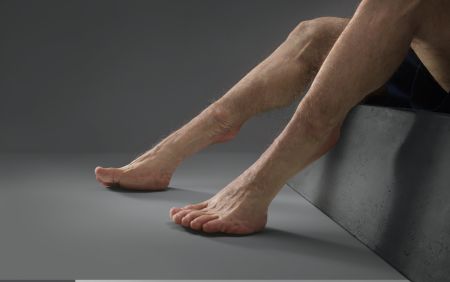21 Jul 2016
Evolutionary science and human vulnerability are at the centre of a new Victorian initiative to reduce road deaths and injuries.
The Transport Accident Commission today launched its latest road safety project, highlighting how susceptible the human body is to the forces involved in transport accidents.
In a shift from its traditional road safety campaigns, the TAC has collaborated with a leading trauma surgeon, a crash investigation expert and a world-renowned Melbourne artist to produce ‘Graham’, an interactive lifelike sculpture demonstrating human vulnerability.
Graham has been designed with bodily features that might be present in humans if they had evolved to withstand the forces involved in crashes. Studies have shown that the human body can only cope with impacts at speeds people can reach on their own, unassisted by vehicles.
“People can survive running at full pace into a wall but when you’re talking about collisions involving vehicles, the speeds are faster, the forces are greater and the chances of survival are much slimmer,” TAC chief executive officer Joe Calafiore said.
“Cars have evolved a lot faster than humans and Graham helps us understand why we need to improve every aspect of our roads system to protect ourselves from our own mistakes.”
Mr Calafiore said the science of human vulnerability underpinned Victoria’s new Towards Zero approach to road trauma reduction.
“We have to accept people will always make mistakes, but modern vehicle safety technology and safe road design can drastically reduce the forces involved when a crash happens, making them more survivable,” Mr Calafiore said.
Royal Melbourne Hospital trauma surgeon Christian Kenfield and Monash University Accident Research Centre crash investigator David Logan briefed Melbourne sculptor Patricia Piccinini to develop Graham.
The installation will be on show at the State Library of Victoria until August 8, before going on a roadshow. Victorians can also interact with Graham online at www.meetgraham.com.au.
In an Australian first, Victorians will be able to use Google Tango, the latest in immersive augmented reality technology, to look beneath Graham’s skin and better understand how his unique features would work to cushion him from serious injury in a crash.
School curriculum has also been developed to enhance the learning experience for students visiting Graham in person or online.
“Graham is an educational tool that will serve the community for years to come as a reminder of why we need to develop a safer road system that will protect us when things go wrong,” Mr Calafiore said.
For Media Only: Download Meet Graham Media Kit
More images, diagrams and video are available from Emily_bogue@tac.vic.gov.au
All materials on this page are free for media to publish and reproduce in their current form.
Media queries only:
- Nicolas McGay, 0403 710 889 or Nicolas_McGay@tac.vic.gov.au
- Kate Vaughan 0423 540 284 or Kate_Vaughan@tac.vic.gov.au
- Ben Martin 0423 542 736 or Ben_Martin1@tac.vic.gov.au
Please refer any other enquiries to:
- Online form
- Tel: 1300 654 329
- Email: info@tac.vic.gov.au





